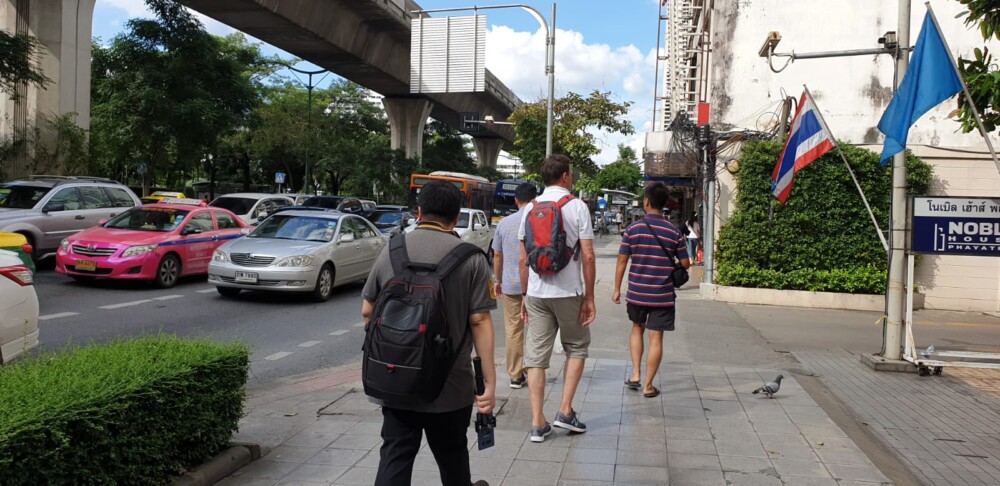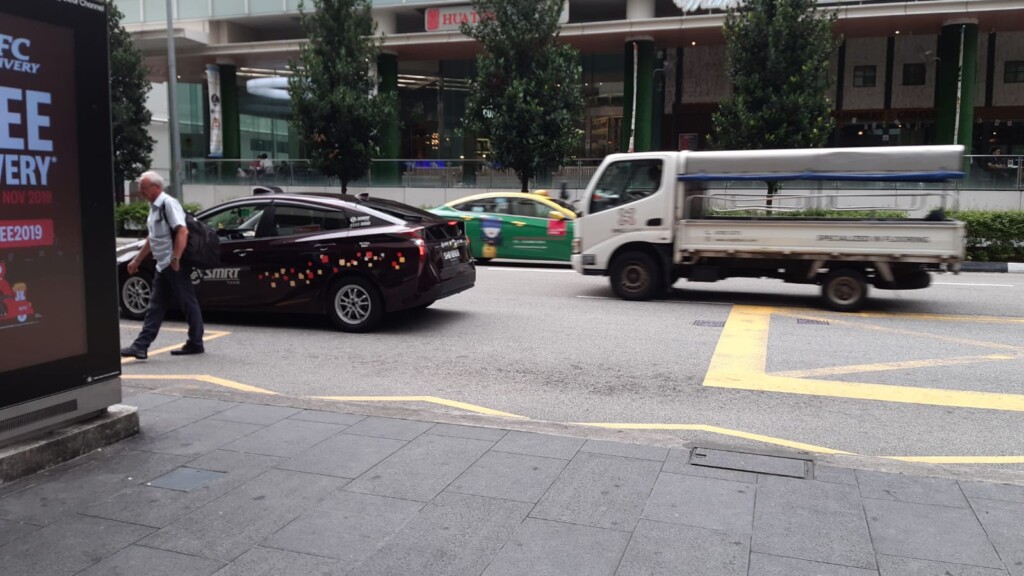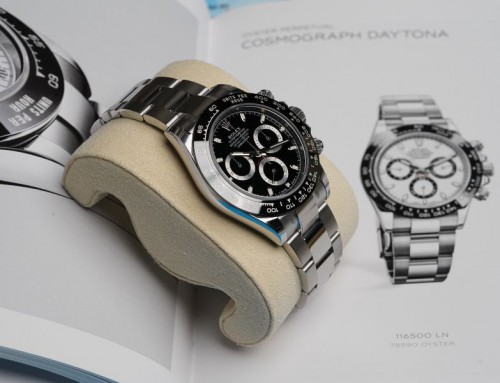Now I hope I am wrong. I do hope that the current system that regulates car ownership will change. There may not need to be a drastic change but there should be changes nonetheless. I am referring to the system of one needing a certificate of entitlement (COE) to own a car.
So what is the COE system?
It is a way of restricting car ownership. It is a mandatory permit that grants the holder of the COE to register, own and use a vehicle in Singapore for a period of 10 years. The COE system was implemented in 1990 to control the number of vehicles on the road. The purpose is to manage traffic congestion.
We do not want Singapore traffic to become something like the traffic in Bangkok…

Yes that is my friends and I walking. It can be faster to walk to some location in Bangkok as compared to taking a taxi.
Not let us move back to the discussion about the COE system in Singapore.
Essentially, the COE is a form of tax on the car owner. Let me explain how taxes work.
Taxes are monies that the government collects and it goes into its coffers. The government would then use this money to improve Singapore in general. For example, public services like street lighting and the police force require monies for them to be running efficiently. As this is a free good, there will not be any private individual or entity that is willing to fund these services. Therefore, the government will have to fund them. The government needs money to do so and taxes provide them with the money to do so. In some cases, taxes are in place to discourage individuals or entities from partaking in certain activities. For example, the Singapore government taxes cigarettes very heavily. This is to discourage people from smoking or probably if they need to smoke, to smoke less. The thing that the Singapore government is trying to prevent people getting illnesses like cancer. Or at least reduce the number of people. In the case of smoking, lung cancer specifically as it has been proven that smokers have a higher chance of developing lung cancer. In the case of road behaviour, the government is trying to reduce congestion. In economics, we call this a negative externality.
Negative externalities can be prevented or reduced with carefully targeted taxes. Taxes on cigarettes are one such example. You want to reduce smoking rates and therefore you tax cigarettes. Through taxes, you change behaviour. People may find it too expensive to smoke and may either smoke less or not smoke at all. In this case, the taxes on cigarettes are targeted. According to the Ministry of Health, smoking prevalence in the Singapore population dropped from 13.9% in 2010 to 10.1% in 2020. In that same time, taxes on cigarettes have been steadily increasing.
Applying this same concept of targeted taxes, we can actually understand why the COE system is flawed.
The negative externality that the Singapore government was trying to reduce is traffic congestion. In this case, the tax should be on the usage of vehicles as the negative externality is due to excess usage. However, the COE is a tax on the ownership of the vehicle. My personal take is that the policy of the COE was something that seemed to be haphazardly put together as the consensus of the day is that if someone owns a vehicle, he will use the vehicle. This is a very flawed way of thinking. I am sure there are many things that all of us own but we do not use. If that is the case, then the government can ensure that every Singaporean owns a pair of running shoes and all of us will be running very often. That neatly brings me to my next point. The way you obtain ownership also determines how you will use that item. If the Singapore government gifts every Singaporean a pair of running shoes, it is unlikely to be a very effective encouragement for many to pick up running because they did not pay for the pair of running shoes. However, if someone pays for a very expensive pair of running shoes, he or she is likely to think that because of the large expense, they should use the pair of running shoes more often to extract as much value as possible. This is the same thinking when someone pays a very high price for a vehicle. If you pay $250,000 or more for a vehicle in Singapore and you can only use the vehicle for 10 years, will you consider leaving your vehicle at home and taking public transport? Highly unlikely. You will want to use the vehicle as often as possible to extract as much value as possible.
Consider car rental companies that purchase vehicles to lease these vehicles for individuals who want to work as private hire drivers. The rental rates will go up if the acquisition cost of the vehicle goes up. This would mean that the driver will have to drive longer hours to make money from his rental vehicle.
Take a look at the traffic congestion that happens so very frequently on our roads. It is a result of many road users wanting to extract as much value as possible from their expensive vehicles.

So then, what is the solution?
We have a solution sitting right in front of us. It is to tax road users based on how much they use their vehicles. We have the ERP 2.0 system that can track vehicle usage on public roads. We have gantries in our central business districts that are lying idle. We are able to tax road users high rates in areas like the central business district and perhaps a lot less on roads that are far away from the city centre. We do not have to do away with the COE system. Yes we can have a hybrid system that taxes both ownership and usage. However, with carefully calibrated taxes, we can increase vehicle growth without increasing traffic congestion. Imagine a scenario where COE is say SGD$30,000 and you purchase an entry level vehicle for maybe SGD$120,000. Yes you are paying maybe $10,000 per annum for your vehicle. However, if the road usage tax that you have to pay to drive to your office in Raffles Place is $30 a day, it is likely that you will consider taking the MRT if that is going to cost you less than 5% of the cost to use the road. Add in parking fees and the savings are even greater. Remember, we never had an issue where we had an insufficient number of carpark lots. The issue was that the roads in certain parts of Singapore, namely the central business districts, were getting increasingly congested.
There are always those who need a vehicle. Some families may have handicapped or elderly family members. Getting them to always take public transport during family outings is not ideal. Yes they can call for a taxi or a private hire vehicle but then some of them have a large amount of things to carry along with them. They may also require vehicles with ramps or vehicle boots that can accommodate items like wheelchairs. If we have progressed truly as a nation, should a vehicle not be something that a family should be able to afford? We can implement highly prohibitive usage taxes on weekdays especially to discourage usage. We can then lower or reduce the usage taxes on weekends and do away with them altogether in certain areas to encourage those with vehicles to visit certain parts of the island.
There are also those who need a vehicle for work. For example, a company that does aircon servicing will need a vehicle. They cannot be carrying all their tools and taking public transport. High COE prices will invariably lead to them having to pass on at least some of this cost to the everyday consumer. Hence while we say that COE is a tax on the wealthy, there are certain costs that are also passed on to the middle and even lower class in Singapore.
One interesting point to note is that while car prices are included in the Consumer Price Index (CPI) calculation under the private transport category, when the MAS monitors core inflation, they exclude car prices from their calculation.
Anyway, my proposed solution may not be the most elegant but at least I am trying to target the behaviour that is causing the externality.
So should we scrap the COE system?
No we should not. We should control the number of new registered vehicles that come onto the road every month. This allows the government to calibrate the vehicle growth and respond to trends. Imagine if Tesla decides to slash prices of its latest Model Y to take a foothold in the Singapore market. This is likely to cause a large number of buyers of the vehicle. If this is unchecked, it could unexpectedly spike the vehicle growth. Ownership, while not directly linked to the root of the problem, is still helpful to a limited extent, in managing traffic congestion.
So why is this archaic policy that was implemented in 1990 still prevalent today?
Well, this is one of the policies which I think need changing. There is no way any transport policy maker can say that taxing ownership is the best way to reduce a negative externality that is caused by usage. It just does not match. So while I generally agree with the government on many of its policies, this is one example of an inefficient policy that remains. Why? Maybe because there is no one who dares to stand up and question the COE system in depth.
Something for the next batch of parliamentarians to think about…
Yours sincerely,
Daryl



